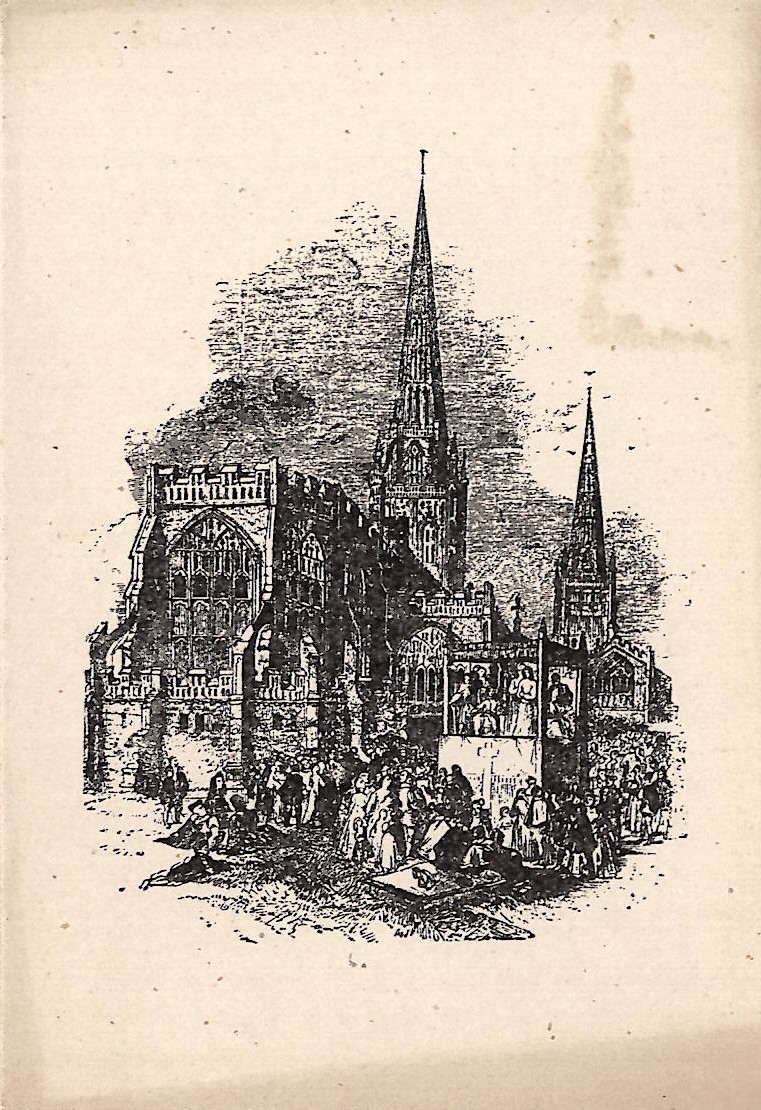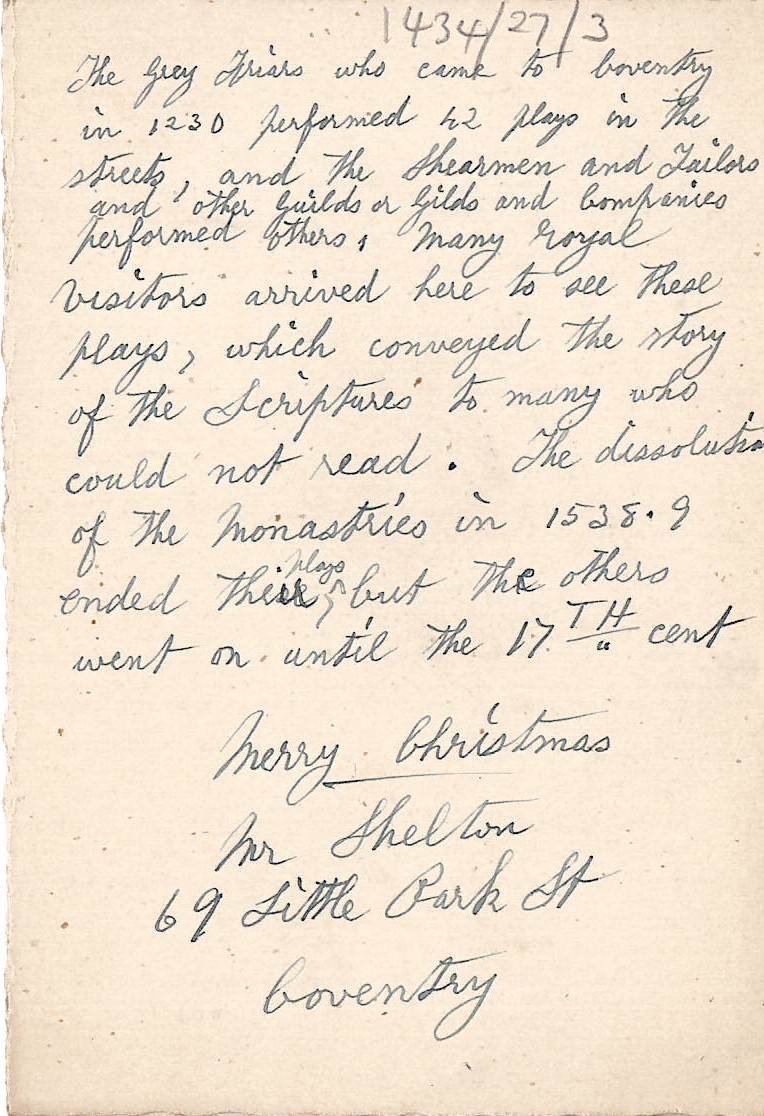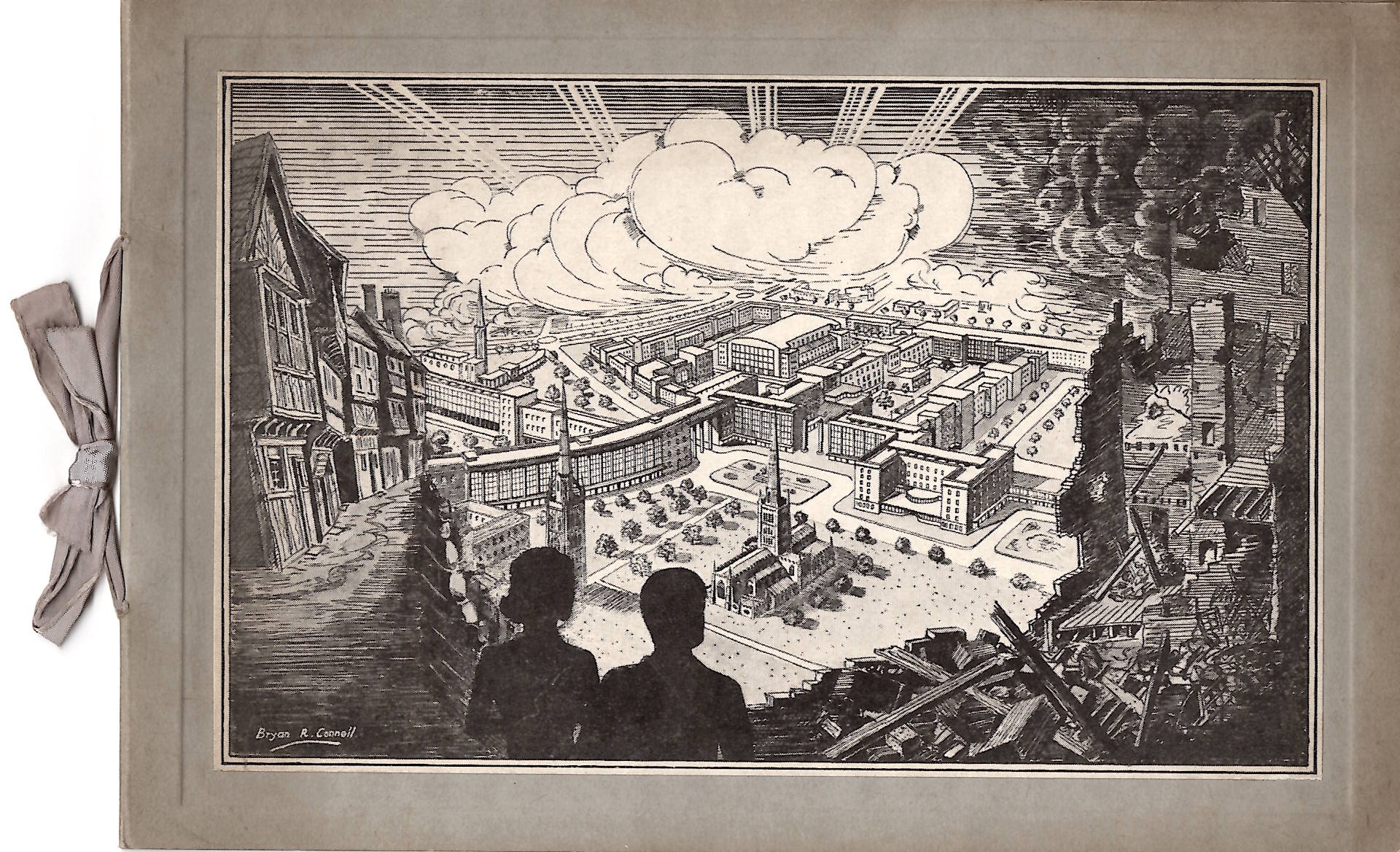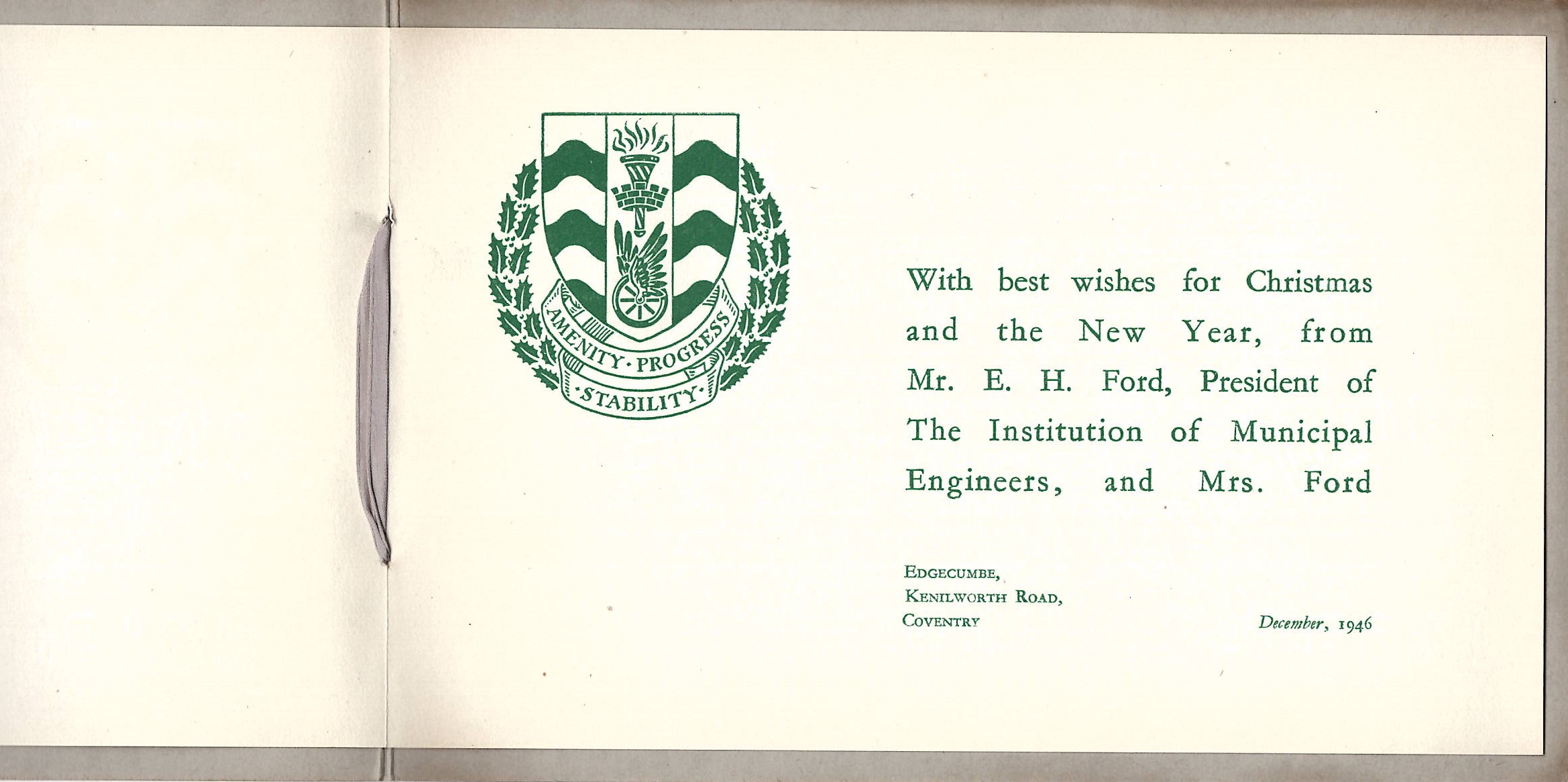Coventry Archives Blog: Christmas Cards
14 December 2022

To celebrate the festive season, Archives Manager Paramjit Sehmi takes a look at Christmas cards from the archives
Having worked at Coventry Archives in the past, I’m delighted to be stepping into a new role as Archives Manager and returning to this local collection. Better still, it's just in time for Christmas - and what better way to celebrate than by shining a spotlight on some of our wonderful Coventry-themed Christmas cards?
The card to the right features a detailed image of St Michael’s Cathedral, identifiable by its prominent spire. The artwork is not dated on the front but, from the condition of the cathedral, it appears to be a depiction of Coventry before the bombing of St Michael’s in 1940. We can also can clearly see the spire of Holy Trinity Church situated behind.
In front of the cathedral, we can see a crowd of people gathered, looking towards others who are standing on some sort of wooden structure. Could this have been a performance of some sort? A nativity scene even? Someone has chosen this image for a Christmas card after all.
Helpfully, the inside of the card sheds some light on the context of the image. It reads: “Coventry pageant plays are some of our oldest English dramas. The illustration shows one being acted before St. Michael’s, the Cathedral which was ruined in the great raid of 1940.”
On the back of the card is handwritten information from a Mr Shelton, who details some additional history about the pageant plays. His information is also backed up by other historical research material held in our Archives.
Coventry pageant plays date back to medieval times when the grey friars came to the city in 1230. According to Shelton, they performed 42 plays in the streets. These plays were organised by the city Guilds and companies, notably the Shearmen, the Tailors, and the Weavers Guilds.
 These performances were originally religious, designed to teach the scriptures to the masses. This was important since, at the time, the majority of people were unable to read, and therefore relied heavily on the spoken word to learn Christian stories and their moral teachings. For example, historian Margaret Rogerson states that, although it was expected that every medieval schoolboy should know the ten commandments, this was actually not the case. From this, she deduces that the performers were professionals who had memorised scriptures, and that they served an important role in teaching members of the public.
These performances were originally religious, designed to teach the scriptures to the masses. This was important since, at the time, the majority of people were unable to read, and therefore relied heavily on the spoken word to learn Christian stories and their moral teachings. For example, historian Margaret Rogerson states that, although it was expected that every medieval schoolboy should know the ten commandments, this was actually not the case. From this, she deduces that the performers were professionals who had memorised scriptures, and that they served an important role in teaching members of the public.
Performances of these religious plays waned after the 1538 dissolution of the monastaries. However, pageants still took place in Coventry until the 1600s. Rogerson points out the social significance of the plays, which often attracted royal visitors. For instance, Queen Margaret insisted that her attendance at a play in 1457, “was a private wish, not a matter of state duty”.
Whilst this Christmas card honours Coventry’s past, another card in the same collection looks to the future of the city. This card was created in 1946, after the Second World War ended, and as Coventry was looking towards rebuilding itself.
Coventry was severely bombed during the war, with extensive damage resulting from an air raid in November 1940. The image on this card shows people peering into the future of the city as they stand within its wartime ruins – offering hope for the future as well as tying in with very literal plans for the redevelopment of the city.
The image was created by Brian R Connell from the Coventry Planning Office, and the card was sent out by the President of the Institution of Municipal Engineers. Rather than simply a utopian ideal then, the drawing is meant to showcase the real and practical ideas already being formed.

Another 1948 document in our collection titled, “The City We Loved” outlines the plans for the city in more detail, noting that “Coventry was ‘blitzed’ but not destroyed”. Therefore, any rebuilding project would need to restore the damaged areas rather than altering intact parts. The opted tact, supported by the council, was as follows: “to replan disregarding property ownership, but bearing in mind that habit in a population is a factor which cannot be entirely ignored. If the accustomed centres of business, recreation and shopping are retained as nearly as possible in their previous positions, it will probably be an advantage.”
This offers us an insight into why city planners chose to keep key features such as the railway station and the cathedral in their original locations, while referencing new developments like the new vista shopping precinct and Coventry’s (in)famous ring road. Overall, it gives a great impression of the city moving forward and propelling itself into a positive future.
So that’s a look a Coventry Christmas card future and past as seen from our Archives! Perhaps the next Christmas play or panto you go to see in the city will remind you on the long-standing history of pageants in Coventry. Or maybe this year you’ll be making your own card with your future vision of the city on it! From everyone at Coventry Archives, we wish you a Merry Christmas and we hope to see to in the new year.

Referenced material: PA 1434/27 (Christmas Cards), Theatre Notebook pamphlet C6d, The City We Loved booklet PA2454/1
If you want to take a closer look at any of the material featured in this blog, why not drop us an email at archives@cvlife.co.uk We’d love to hear from you!